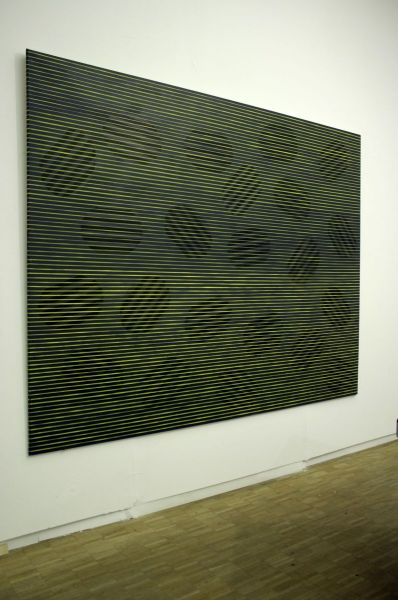Wien, Künstlerhaus am Karlsplatz
Exhibition / Ausstellung Künstlerhaus am Karlsplatz, Vienna
At the invitation of artist Christian Eder, the house gallery of the Vienna Künstlerhaus
has become the meeting point for three artistic standpoints: Christian Eder. Michael
Kravagna. Peter Paszkiewicz.
Beyond the figurative context, the emphasis of their works concentrates upon materials
and their surface structure. The spatial dialogs of each art piece, which plays an important
role not only in Peter Paszkiewicz’ stone sculptures but also in Christian Eder’s and
Michael Kravagna’s canvas paintings, converge within this room. The changing
standpoint of the observer causes new colors to emerge from the paintings; or a change in
incoming light cause the stone to release a further layer of its texture. The works
formulate their character with the interplay of autonomous painting and stimulation
through natural phenomena, which are deconstructed into constructive-formal
components or expressed as pure color. This places the artist’s positions at a very special
crossroads, at a place where the perception of nature itself unfurls parallel to its portrayal
in the artwork. The fact that this is best done by thoroughly reducing forms is made clear
by the works presented here. In the sculptures and paintings alike, perceptions of reality
are rendered in reduced colors and clear, precise forms, whether as geometric motives in
Christian Eder’s paintings or the relief-like modeling of differentiated color layers in
Michael Kravagna’s canvases. The artists compose themes such as time, light, and
movement in abstract color paintings on canvas or as abstract sculptural forms, therewith
releasing themselves from any literarily defined type of art. The sensual experience of
color and material and the layering, overlapping, and surface materiality thereof remain
the center of attention. Depending on the fall of the light, a seeming monochromaticity
continually interchanges with the scintillating movement of color on the canvases.
These works show the sensitivity and knowledge that their artists have for color nuances
and the full complexity of texture, as if their goal was to enhance our perceptive capacity.
(Silvie Aigner)













